Vegan Globetrotter is supported by our audience. When you purchase through one of our links, we may earn a small affiliate commission. As an Amazon Associate I earn from qualifying purchases. Your cost is not affected.
==================
What Are Flower Vegetables?
Vegetables must have been one of the first words we were taught as kids. That’s because parents want their children to learn to enjoy eating veggies. And so, we grew up with the notion that vegetables were somehow just parts of plants people included in their daily meals. However, through common practices and long-held traditions, we’ve come to separate fruits, flowers, nuts, cereal, and grains from vegetables.
But then broccoli, tomatoes, potatoes, seeds, and fruits used as savory ingredients are considered vegetables. So, we may ask what are flower vegetables, then? The simple answer is that they are the flowers that grow from plants that we know are vegetables. And those flowers are edible and nutritious. And since vegetables are plants, basically, they produce buds that grow into flowers and scatter seeds when they mature. Just like most plant life or flora thriving here on our planet.
So, we’ve calibrated and expanded a bit our notion of vegetables and plants we consume as foods. Now, we’re ready to go straight into meeting a few kinds of flower vegetables.
10 Flowers Also Used As Vegetables
1 | Agati Flowers
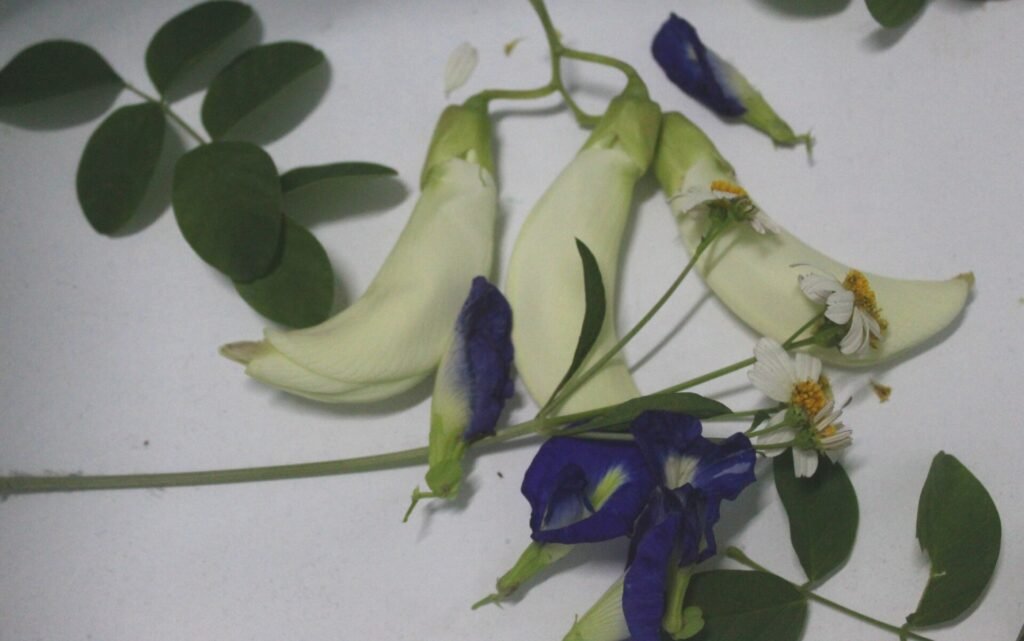
Agati is a perennial legume tree with a characteristic straight trunk bearing a few branches. The flowers come in pink, red, yellow, or white. And they form in clusters as they develop from the central stem. Besides providing shade, it can be included in ornamental planting to enhance a space. Also, several agati trees can serve as shelter and protection from the wind.
Agati flowers as recipe ingredients:
Besides its leaves and pods, the flowers of Agati are edible and are traditionally used in Asian cuisines. And to reduce its bitter taste, the Agati flower’s core must be discarded before cooking.
Nutrient Content:
Together with the leaves, the agati flowers contain nutrients such as proteins and minerals. And they provide significant amounts of vitamin A and C, folate, niacin, and thiamin. Magnesium, phosphorus, potassium, and selenium are present in ample amounts.

boiled green agati flower
2 | Artichoke Blossoms

Artichoke flowers for sale at a market
Artichokes are of two types: the elongated ones and the globe-shaped ones. Examples of the elongated ones are the Siena artichoke and the Violeta. While the Castel and Chianti artichokes are the globe-shaped ones. The flowers of the artichoke are really striking but not recommended for eating.
Artichoke flowers as recipe ingredients:
The artichoke flowers are not edible and are in fact poisonous. So, you must use the artichoke buds for cooking instead. But don’t wait for the buds to start growing into flowers. While the center “choke” is discarded, the parts that can be eaten safely are the heart, the center stem, and the petals
Nutrient Content:
Due to its wide content of important vitamins and minerals, plus antioxidants, there are a host of health benefits from eating them. Among them are:
- Cancer prevention and treatment
- Full of antioxidants
- Good for the liver
- Powers up immunity
- Promotes cardiovascular health
- Reduces bad cholesterol
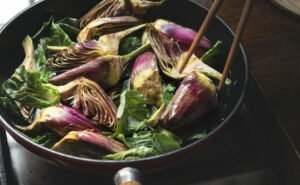
3 | Asian Pigeonwings Flowers
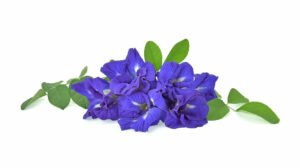
The plant known as Asian pigeonwings or Clitoria ternatea, is claimed to have originated in the archipelago of Indonesia. It’s a perennial herb plant that grows as a vine and thrives in damp soil. The flowers are a striking blue-violet hue with white marking at the base of its petals.
Asian Pigeonwings flowers as recipe ingredients:
In some Southeast Asian cuisines, the edible flowers are steeped in batter and then fried. The petals are likewise used to make tea and added with juice like lemon grass or other citrusy liquid.
Nutrient Content:
Extracts from the plant have shown medicinal properties to fight inflammation and diabetes. Also, they relieve pain and prevent or reduce fever. Also contains nutrients like anthocyanins, glycosides, and steroids.

Still life ingredient for cooking with Asian pigeonwings flower in kitchen
4 | Banana Blossoms

By Nathan Forget – https://www.flickr.com/photos/nathanf/2511540457/, CC BY 2.0,
The common banana plant species are the Musa acuminata and the Musa balbisiana. And the banana fruit cultivars (cultivated varieties) have different colors. But the most common are the yellow and green ones, and the more exotic-looking are the pink and scarlet varieties.
Banana flowers as recipe ingredients:
Banana flowers are often cooked as vegetables. Include them in curries and salads. They can be stir-fried or made into sweet or savory fritters. Alternatively, they can be fillings in pies, pastries, or quiches. The outer petals which are not edible can be used as paper plates for a tropical or native ambiance.
Nutrient Content:
Banana flowers are made of both soluble and insoluble fibers and are low in calories and fats. So, the insoluble fibers are good for the digestive tract helping a person be “regular.” Additionally, they provide minerals such as calcium, copper, iron, magnesium, potassium, and zinc required by many body functions. Lastly, banana flowers contain antioxidants that stabilize free radicals reducing the development of diseases.

5 | Broccoli Blossoms
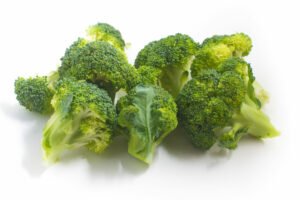
Belonging to the cabbage family, broccoli is a green plant used as a vegetable. It’s got a stalk, small leaves, and a big flowering head. The flower heads appear like small trees that branch out from the light green stalk. The scientific name of broccoli is Brassica oleracea.
Broccoli flowers as recipe ingredients:
In salads, mix in yellow raw broccoli flowers to add a whiff of peppery aroma, besides adding color. For stir frying, choose younger broccoli flowers.
Nutrient Content:
Both fiber and sugars make up broccoli’s carbohydrates. Fructose, glucose, and sucrose, plus lesser lactose and maltese content make up the sugars. Broccoli is not only a great source of protein. It’s also packed with vitamins and minerals. They are vitamins B9 or folate, vitamin C, Vitamin K1, and minerals potassium, manganese, and iron. Lastly, they are rich sources of phytochemicals. And these are carotenoids, quercetin, sulforaphane, indole-3-carbinol, and kaempferol. For example, carotenoids assist in ridding the body of harmful compounds. While sulforaphane drives out toxins from the body. And some compounds, like quercetin, from flower vegetables, help promote blood flow.

Pile of Broccoli
6 | Chives Blossoms
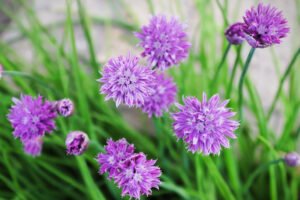
Chives are perennial plants, that is, they live for more than two years. When in bloom, they bear pinkish flowers, and those flowers are edible. And they are globular in appearance, composed of many tiny lancet-shaped petals. These petals are tinted with purple slowly turning light pink towards the tip. Also, tiny white florets emerge as they mature.
Chive flowers as recipe ingredients:
There are three good reasons to include chive florets in your recipe. First, they add color, nutrients, and a mild pungent and savory flavor to your recipe. Second, they can add flavor to soups, salads, or side dishes. Lastly, even for the main dish, some chive flowers can make a big difference, Because they can impart just the right amount of zestiness to add punch to an exotic type of dish.
Nutrient Content/Nutritional Profile:
Promotes the reduction of cholesterol and triacylglyceride levels in the blood. Present also are fatty acids, palmitic acid, linoleic acid, and stearic acid. Saturated and unsaturated fatty acids, vitamin E, and flavonoids.

Tomato salad with chives flowers in a white bowl
7 | Dandelion Flower

Considered as weeds, dandelions can be difficult to control and can also be invasive. On the other hand, they are robust and can grow in many kinds of soil. And their yellow flowers are edible and packed with many nutrients.
Dandelion flowers as recipe ingredient:
For a plant regarded as a weed, it’s incredible that every part of the dandelion is edible. The roots, the stems, and the leaves. Besides the bright yellow petals that can be decorative in a salad, they can safely be eaten uncooked. Additionally, dandelion flowers provide versatility in preparing snacks quickly. They can be coated with bread crumbs and then fried. On the other hand, if time is not a problem, they may be used for jelly, or made into wine.
Nutrient Content:
Dandelion flowers are low in fat and calories beneficial for reducing weight. And consuming them could promote the increase of the good gut bacteria resulting in stronger digestive health. Moreover, dandelion flower tea can provide anti-clotting benefits for people prone to blood clotting.
Lastly, the bright yellow compound in the flower is the carotenoid antioxidants that strengthen eye health.

Dandelion flower in a cup of tea
8 | Lotus Blossom

Pink lotus flower blooming
Lotus (Nelumbo nucifera) is an aquatic plant growing on the banks of rivers and deltas, and shallow portions of the lake. In Eastern religions, the lotus is regarded as the most sacred of flowers. They also have the ability to resist pollution, and also purifies the air around it.
Lotus flowers as recipe ingredients:
As an edible blossom, it tastes like a potato, quite starchy, crispy and somewhat sweet. For savory toppings and refreshing tea, the lotus flowers must be dried.
Nutrient Content:
The lotus flowers are a source of fats and fibers and contain the following nutrients:
- Ascorbic Acid and Ascorbate (Vitamin C)
- Biotin (Vitamin B7)
- Calcium
- Carotene
- Iron
- Minerals
- Nicotinic Acid
- Protein
- Thiamine (Vitamin B1)
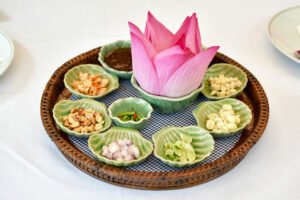
9 | Lavender Flowers

This beautiful plant got its name from one of the pleasant-sounding synonyms of the color violet, or purple. That is, the lavender-hued tiny blossoms that grow in whorls along the stalks. And there are many popular cultivated lavender species. The Lavandula angustifolia ‘Munstead’ species is the more preferred one due to its sweet aroma and taste with a hint of lemon.
Lavender flowers as recipe ingredients:
One of the culinary uses of lavender flowers is in making tea. Lavender flowers are also popularly used in decorating cakes. They are coated in sugar or cooked in syrup to glaze them.
Lavender flowers’ flavor can go well with either savory or sweet ingredients and recipes. Also, they serve as a flavoring for many favorite baked products. In drinks and desserts, use lavender moderately due to its strong taste. Or start off with just a small amount, test the flavor, and add sparingly until the desired taste is reached.
Nutrient Content:
The lavender plant contains phytonutrients such as coumarin, flavonoids, tannin, and triterpenoids.

10 | Purslane Flowers

Purslane flowers and green leaves
The succulent plant Purslane (Portulaca oleracea), is also known as summer purslane. And this plant has thick, fleshy leaves and bears miniature bright yellow flowers. Purslane used to be regarded as a weed and has now been popular because of its high nutrient content.
Purslane flowers as recipe ingredients:
Together with the leaves, the flowers of purslane can be added raw in salads, and as vegetable filling in sandwiches. As a side dish, you can mix, sauté, or steam them with other vegetables. Alternatively, dip them in a batter and fry them.
Nutrient Content:
Purslane has minimal carbohydrate content and a low glycemic index rating. And it doesn’t contain too much fat, having only 0.007 oz. (0.2 grams) of fat in one cup. It only has a minimal amount of protein but provides many micronutrients like vitamin C and potassium. It also has iron, magnesium, calcium, selenium, vitamin A, and the B-vitamins.

Fresh baked bread with olive oil and green portulaca purslane salad
Takeaway:
By going through all ten great examples of flower vegetables, we’ve gathered answers to the question ”what are flower vegetables?” And we are rewarded in three ways when we include them in our diet. First, we get important nutrients that our body needs. Second, their versatility in food preparation makes us enjoy them in our meals, either raw or cooked. Lastly, they add texture, color, and extra flavor that make the dining experience more pleasurable.
READ MORE:
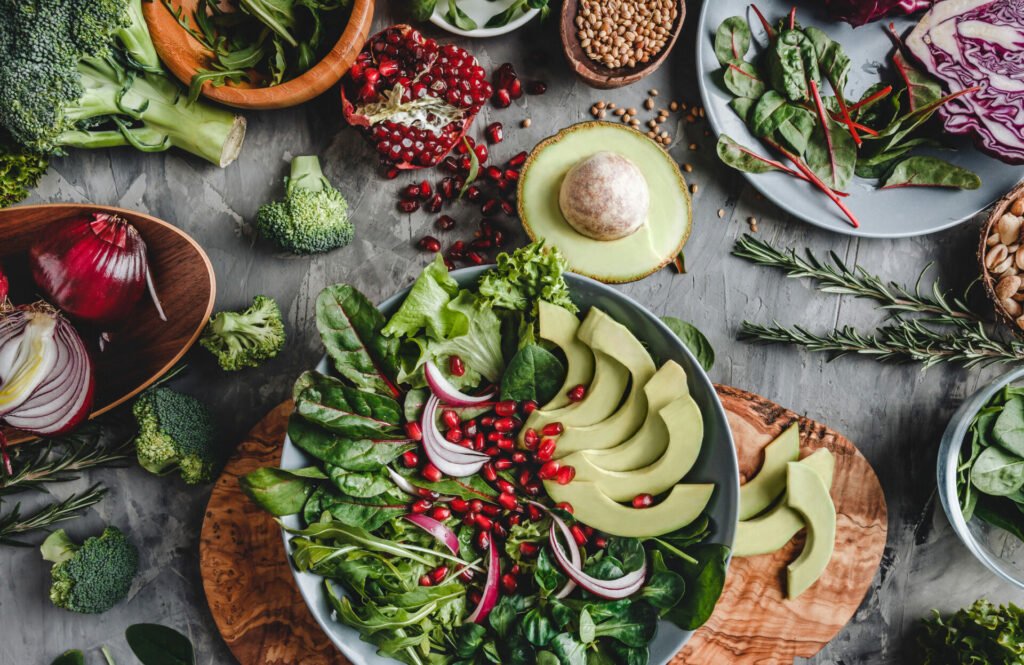




I learned a lot today! Never knew flowers had nutritional benefits.
I’m glad you found the information helpful!